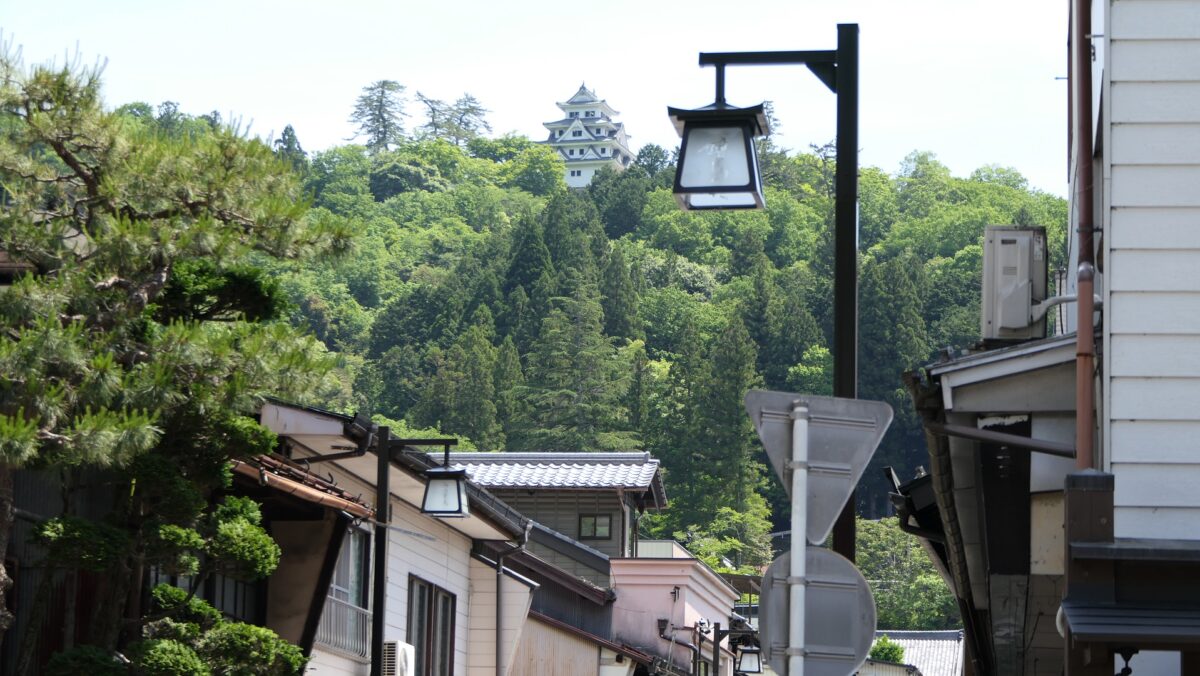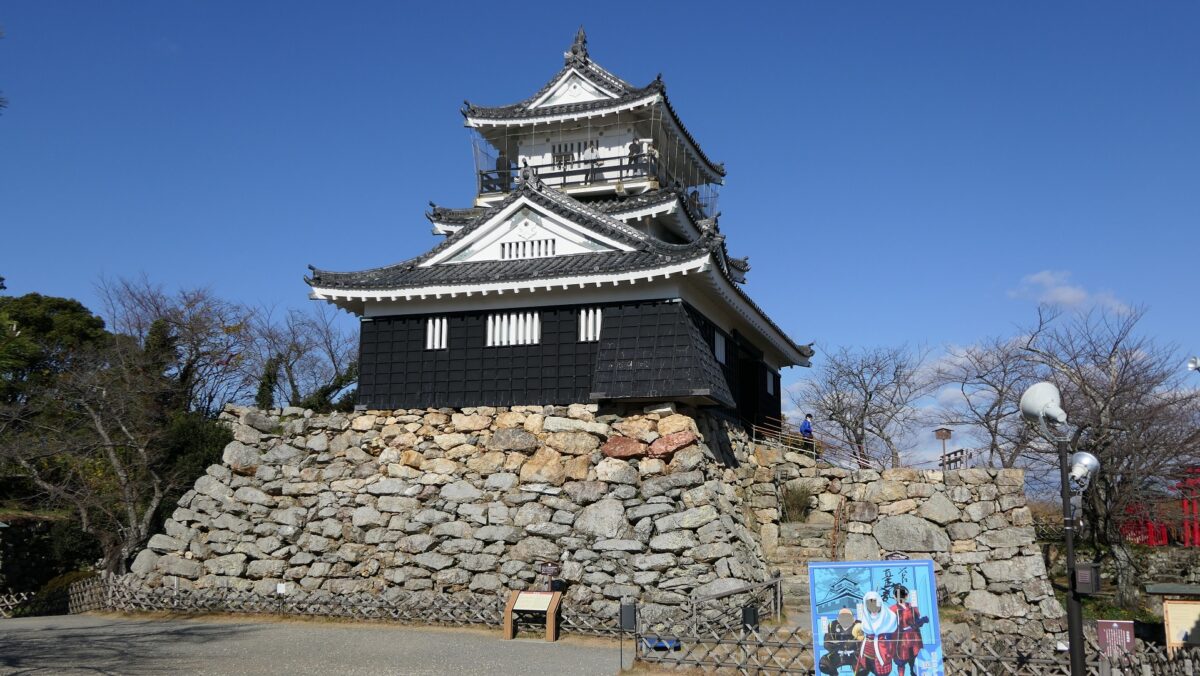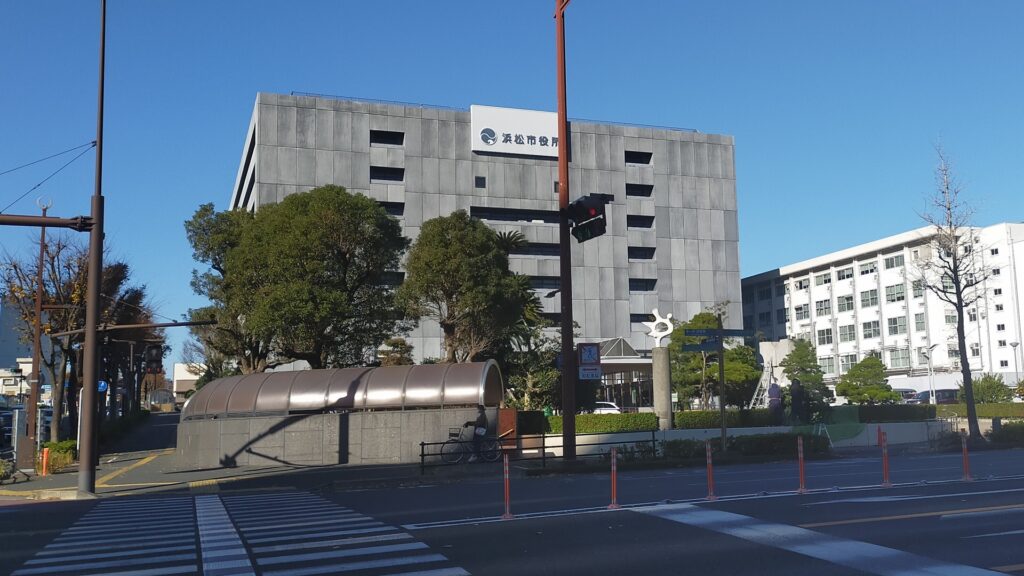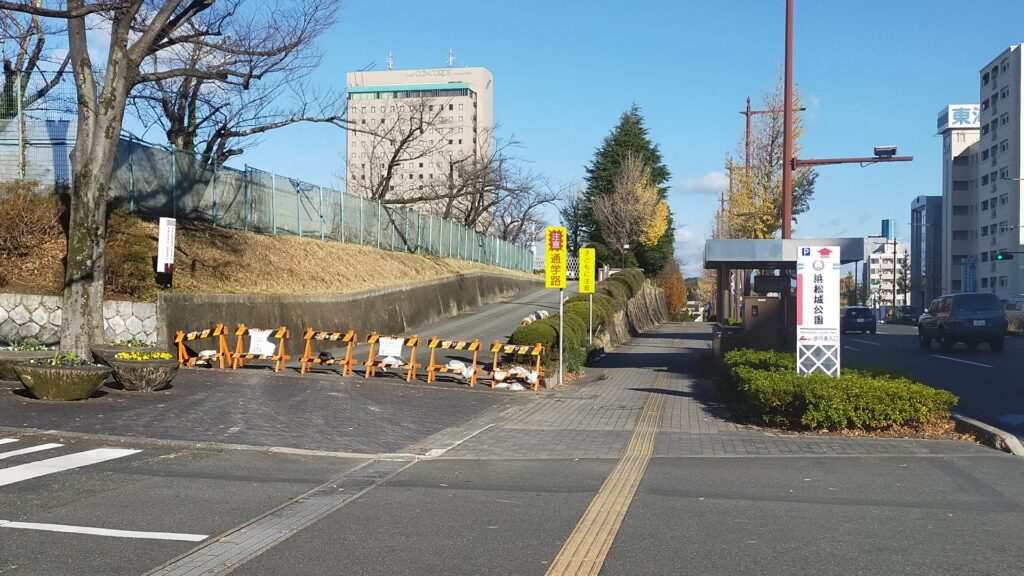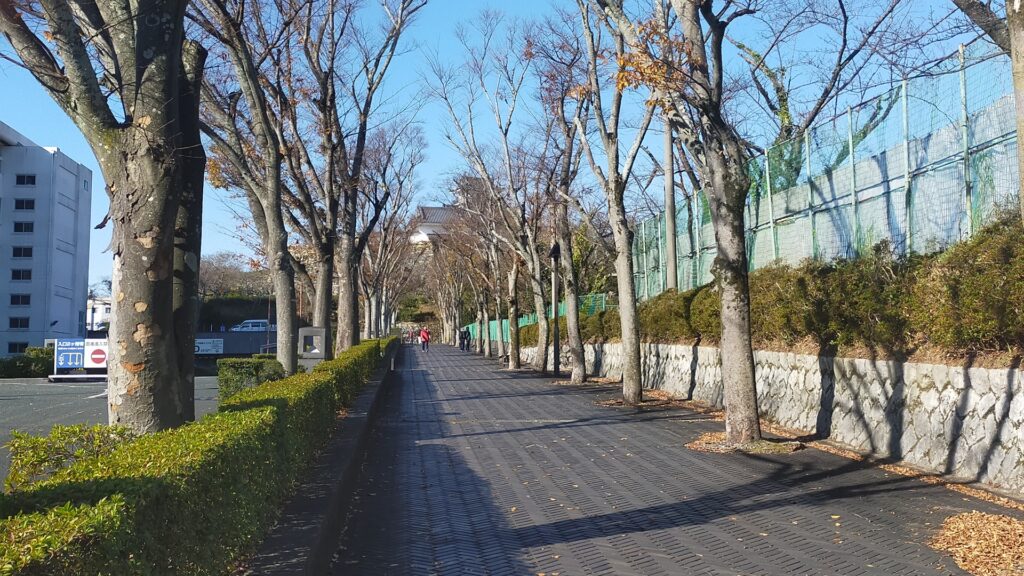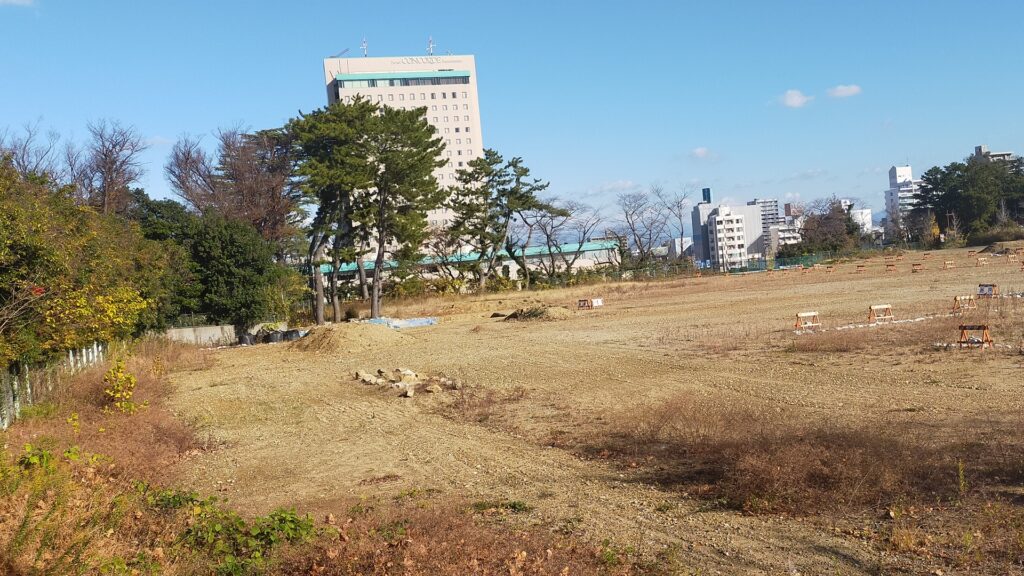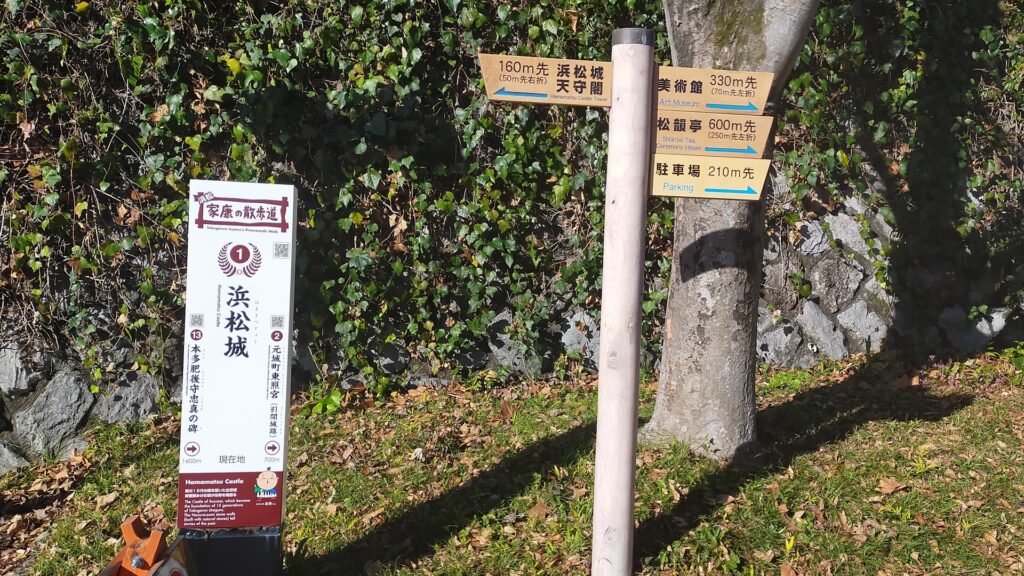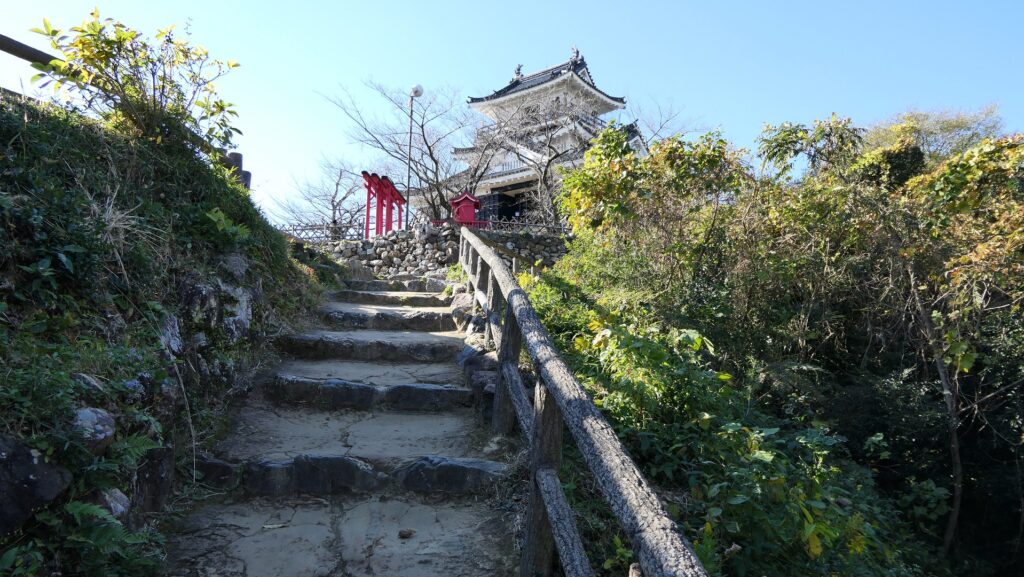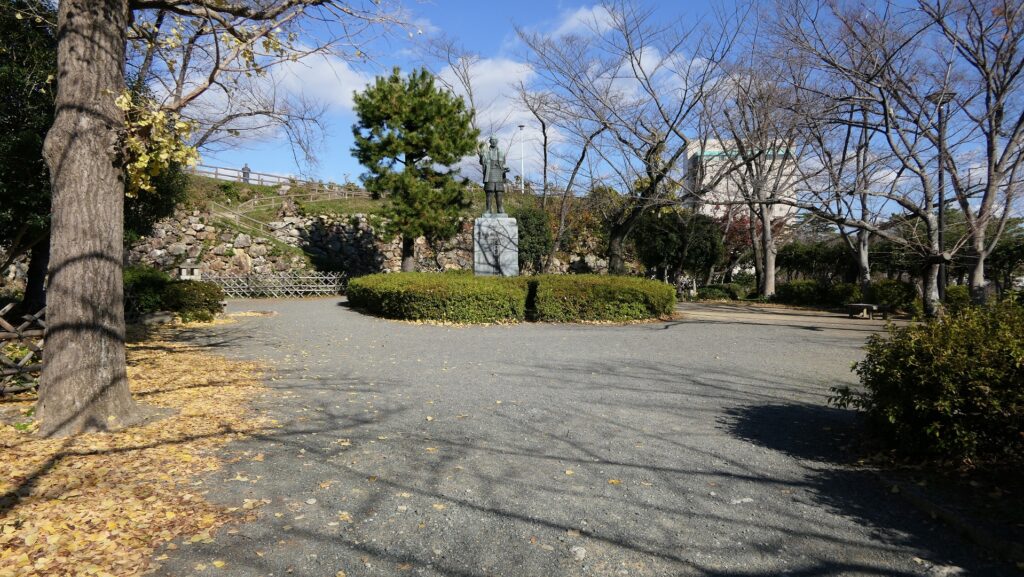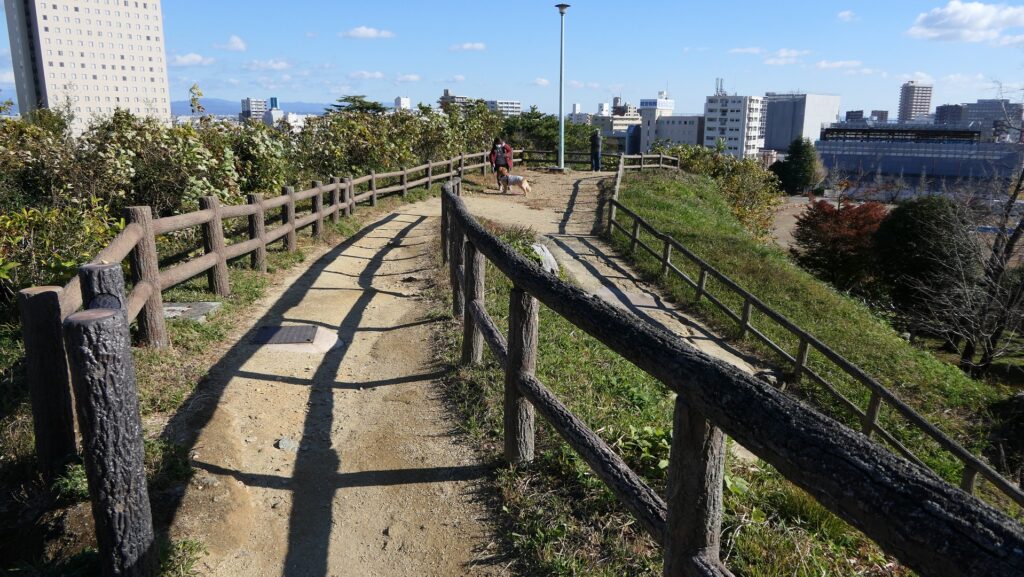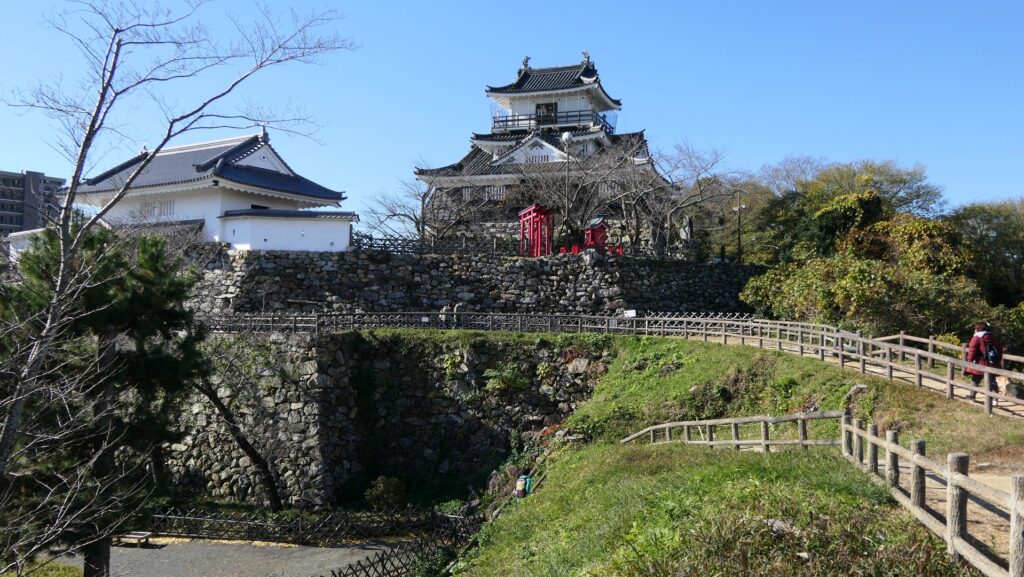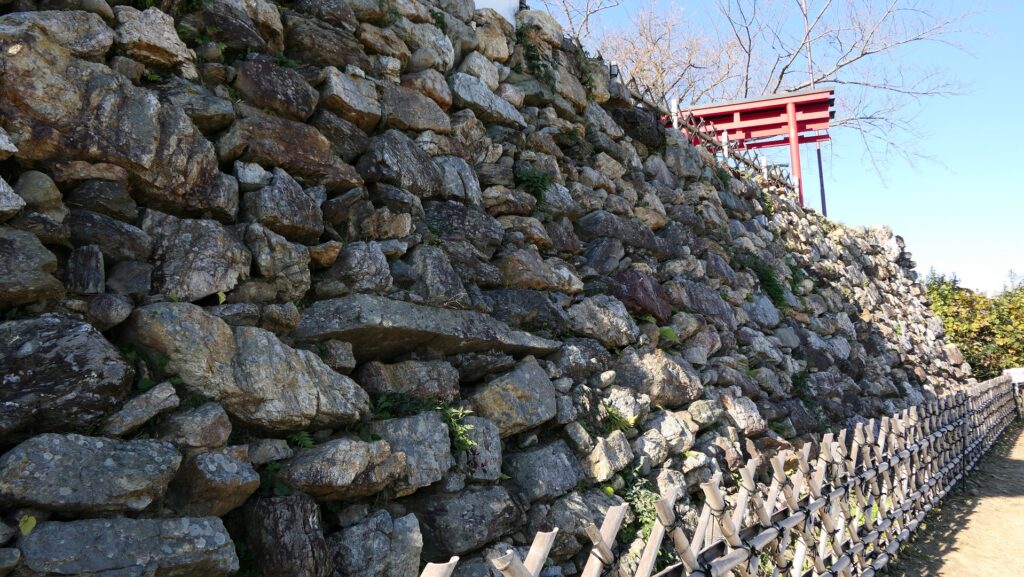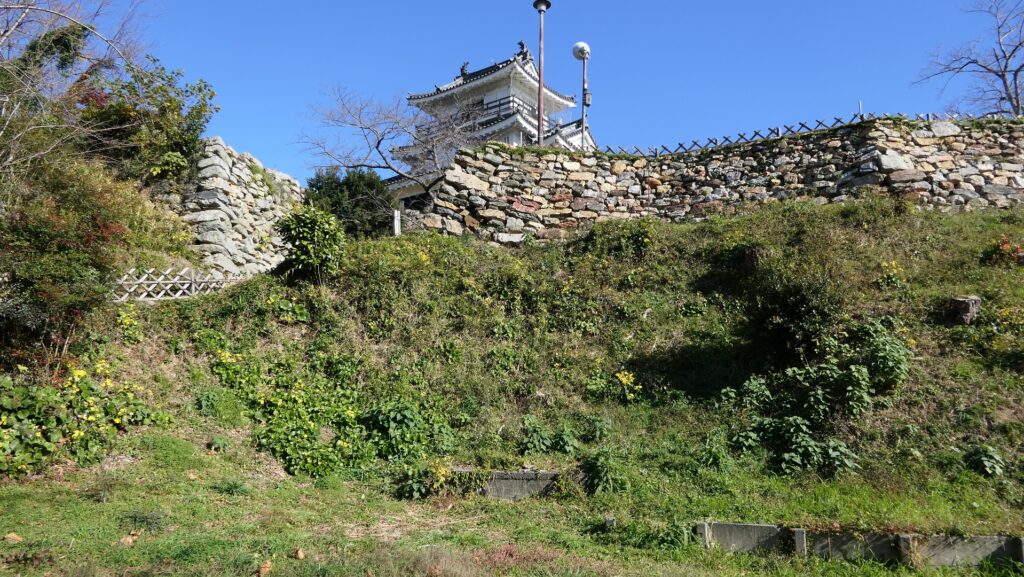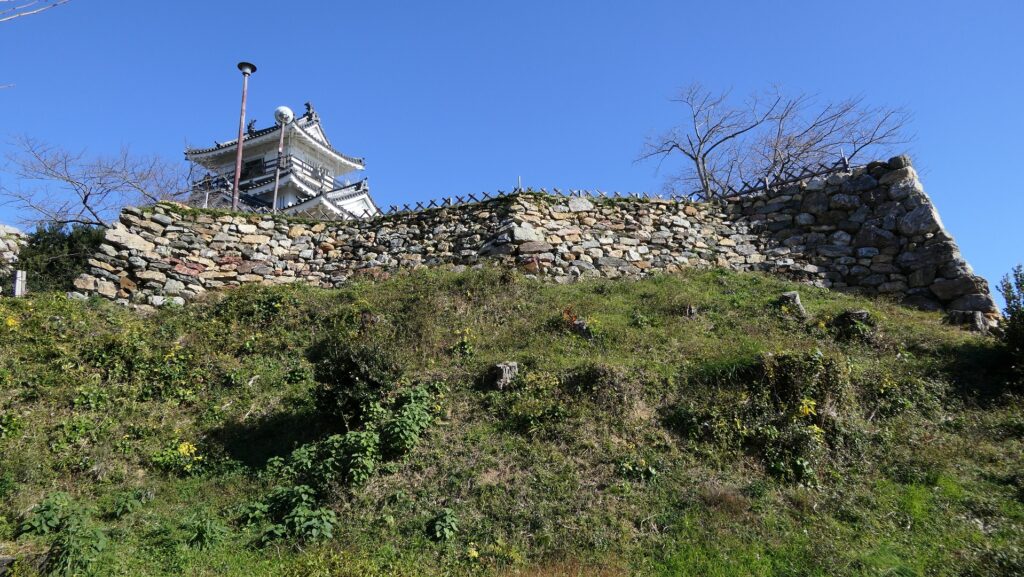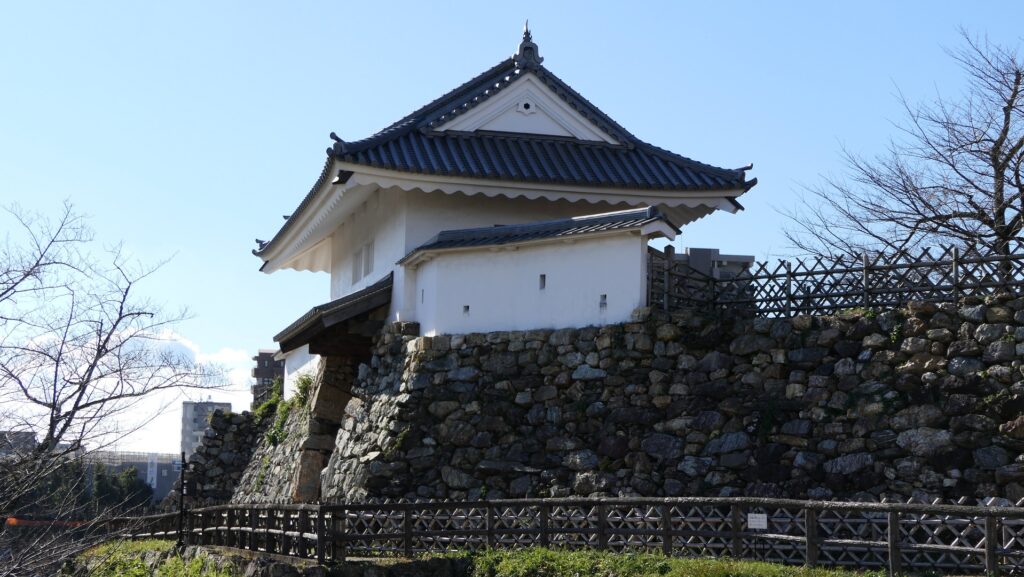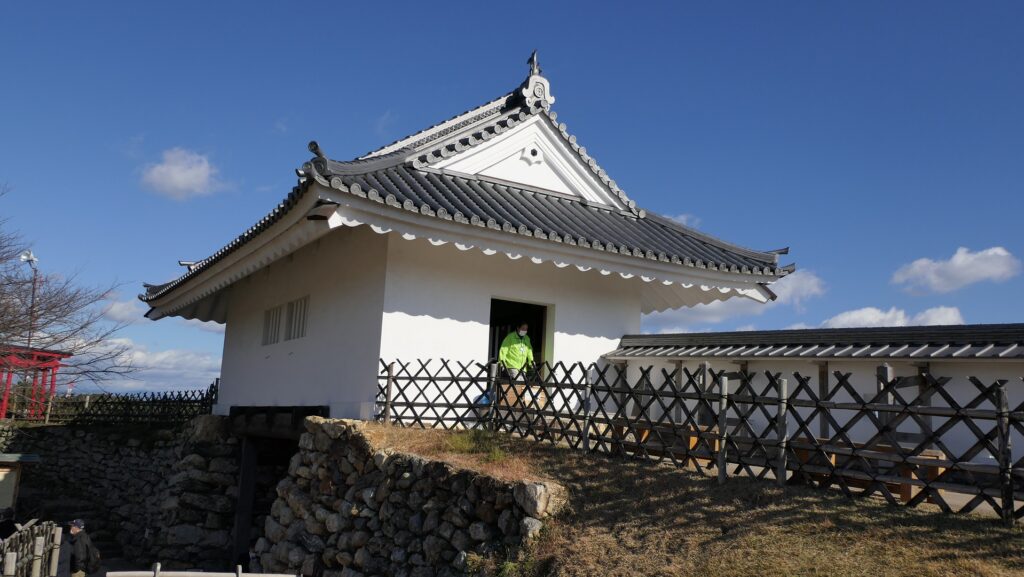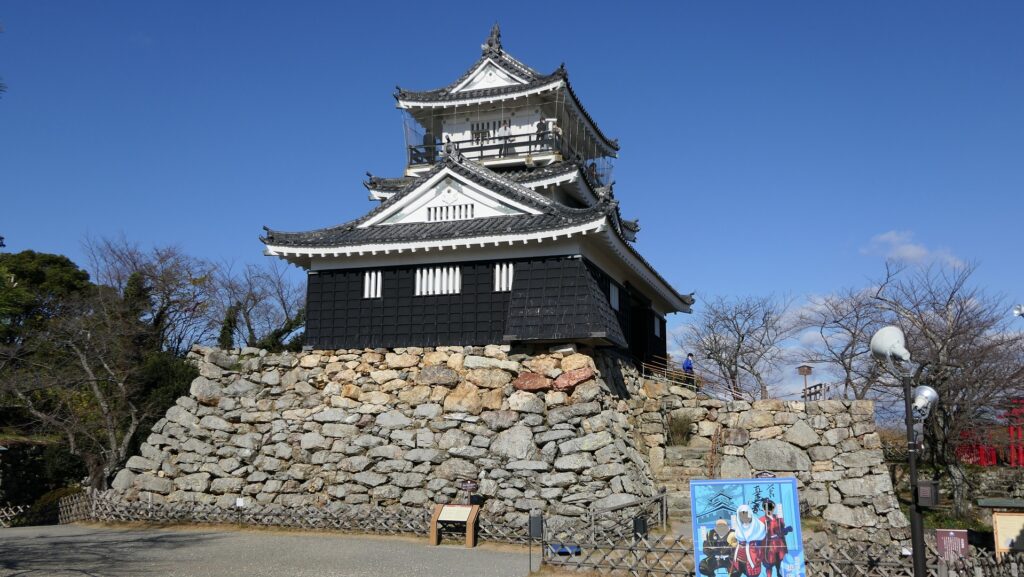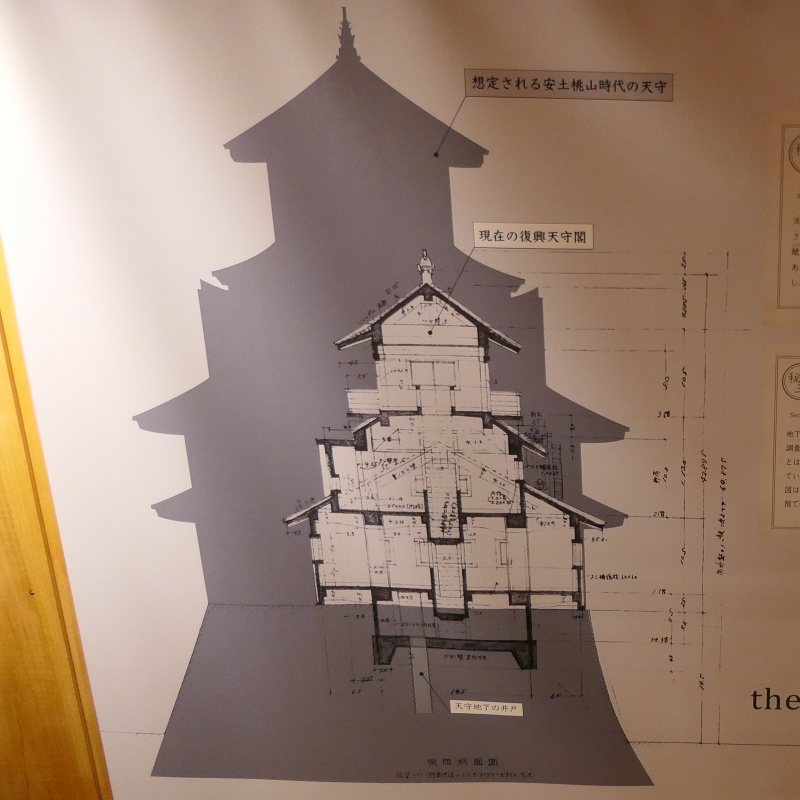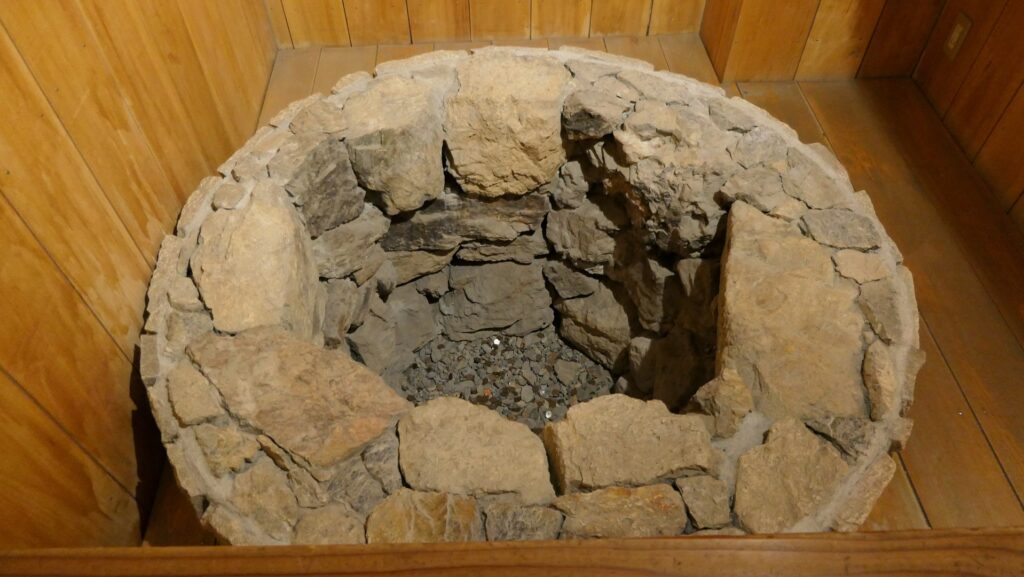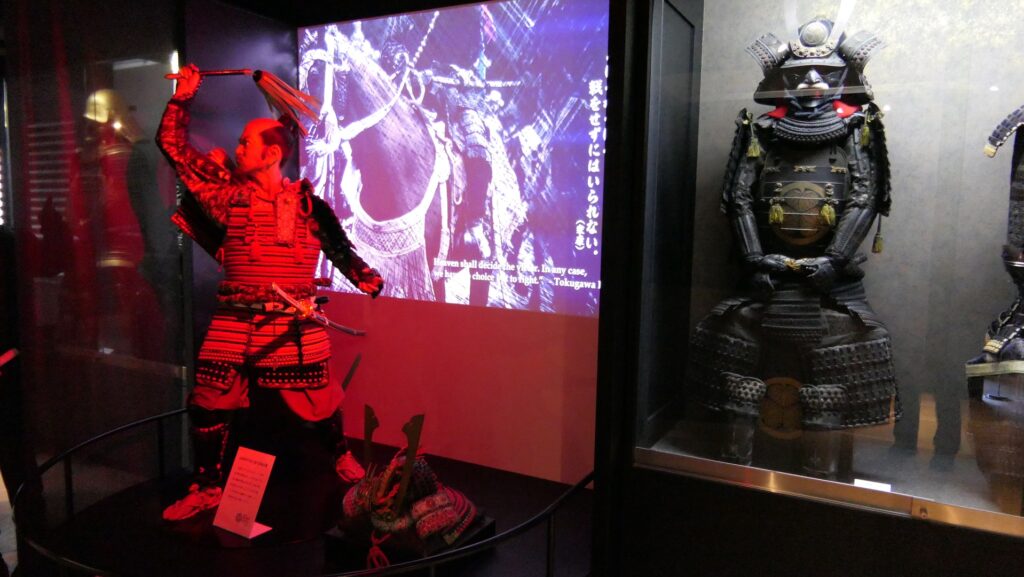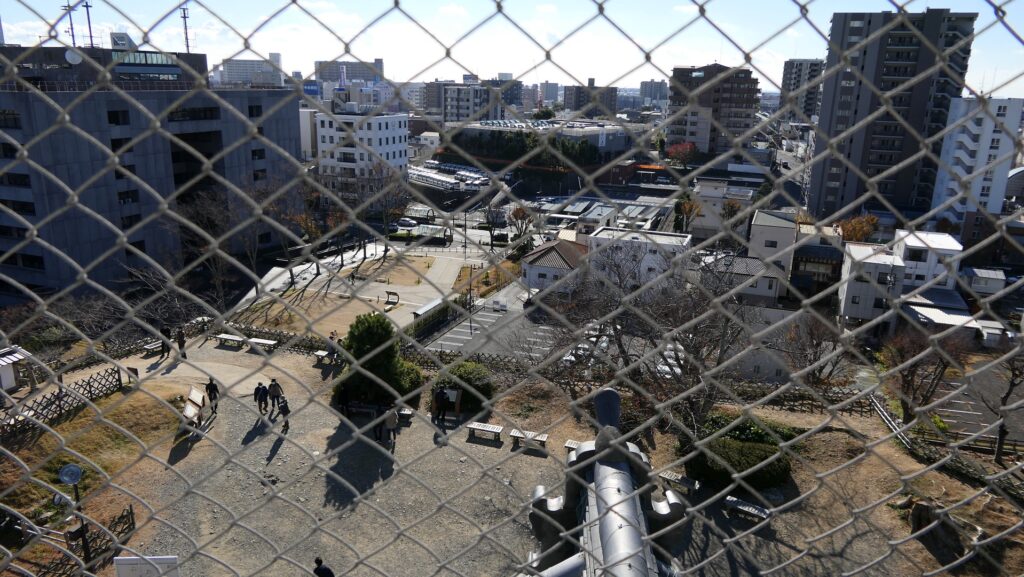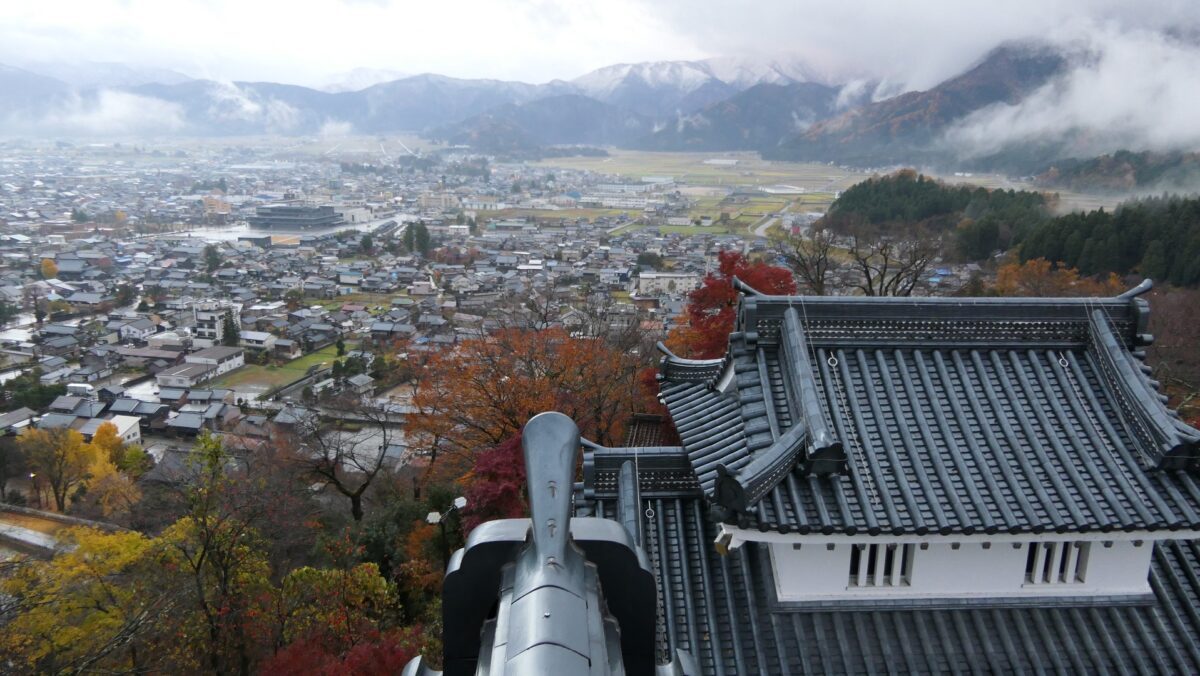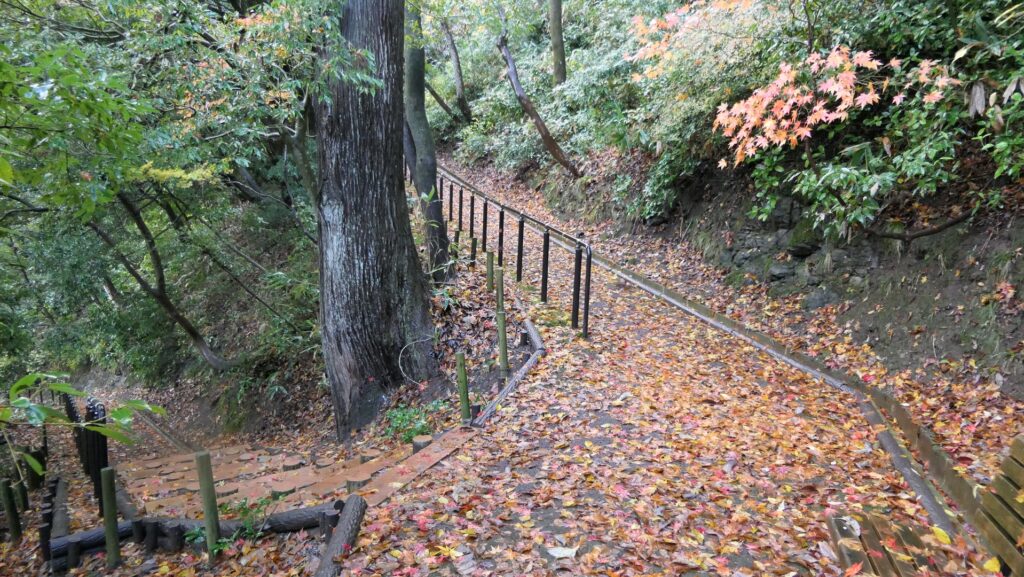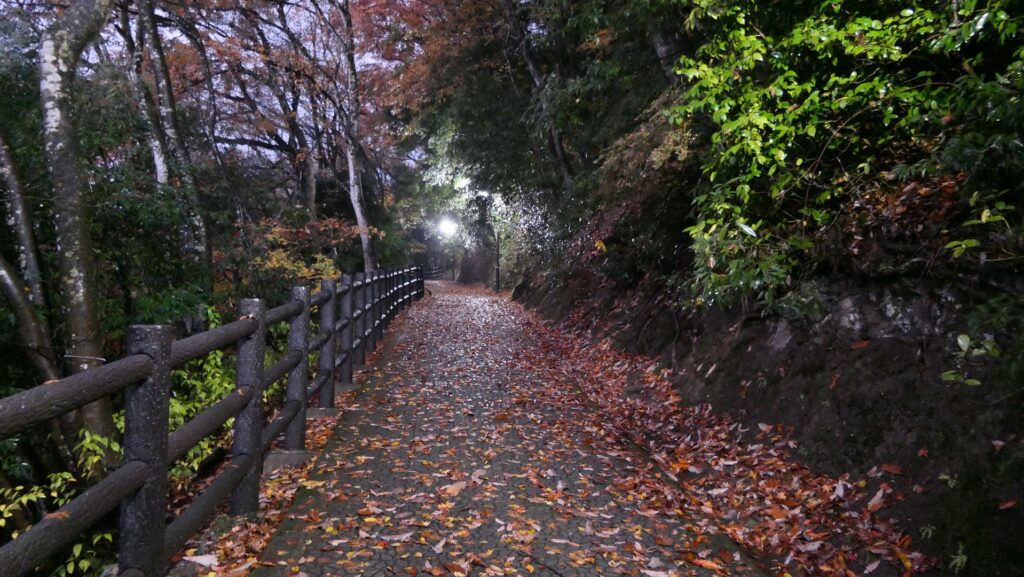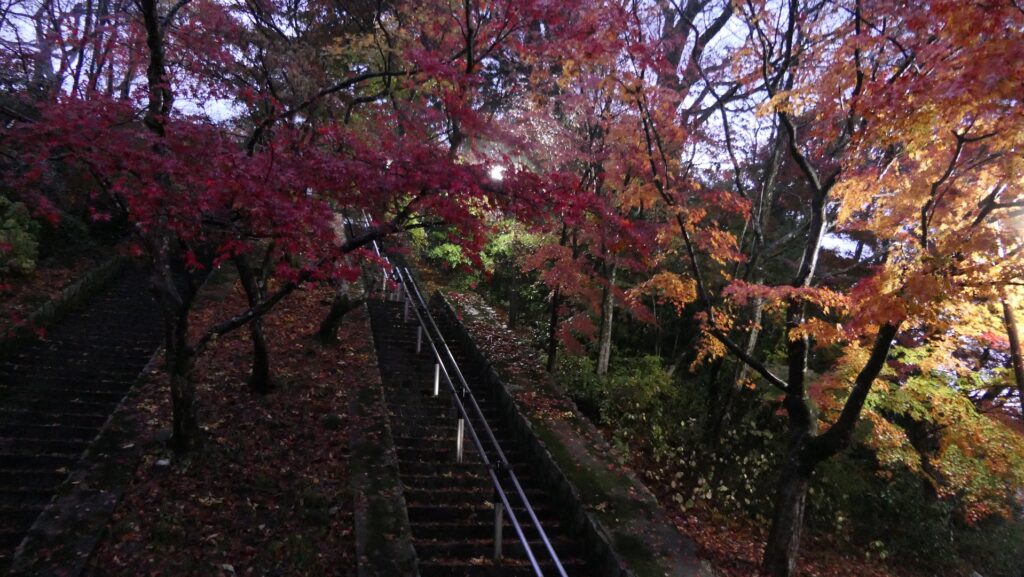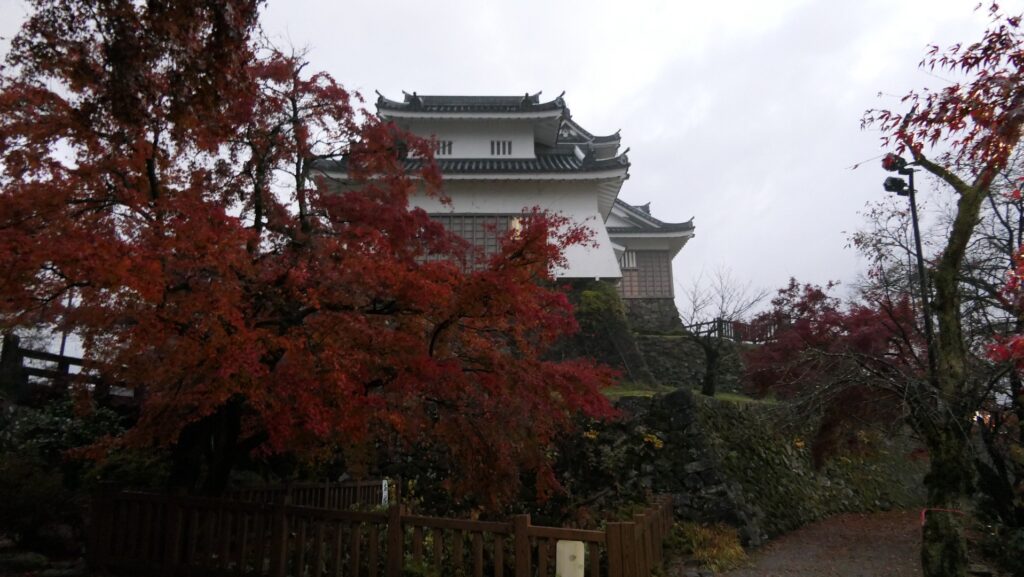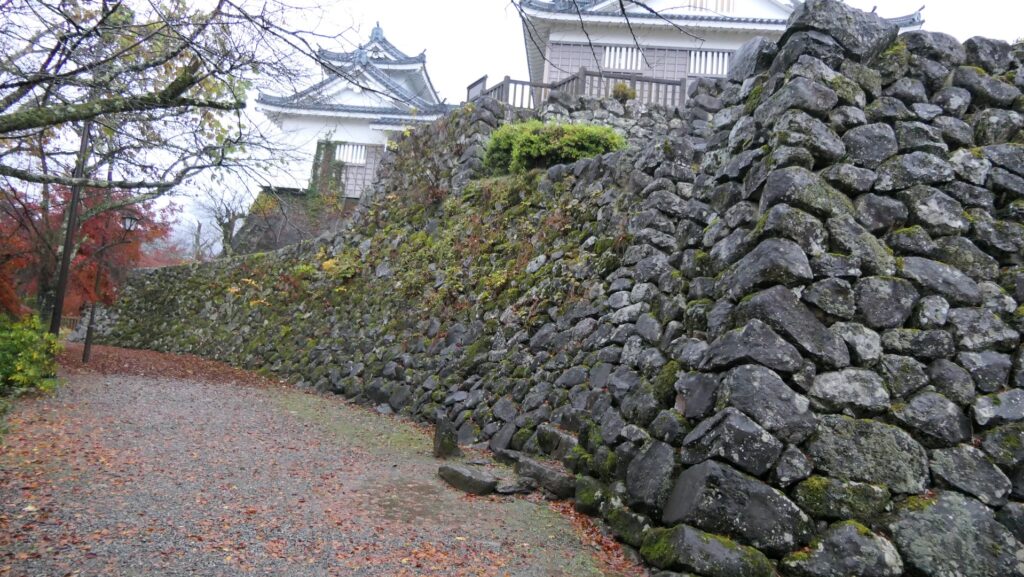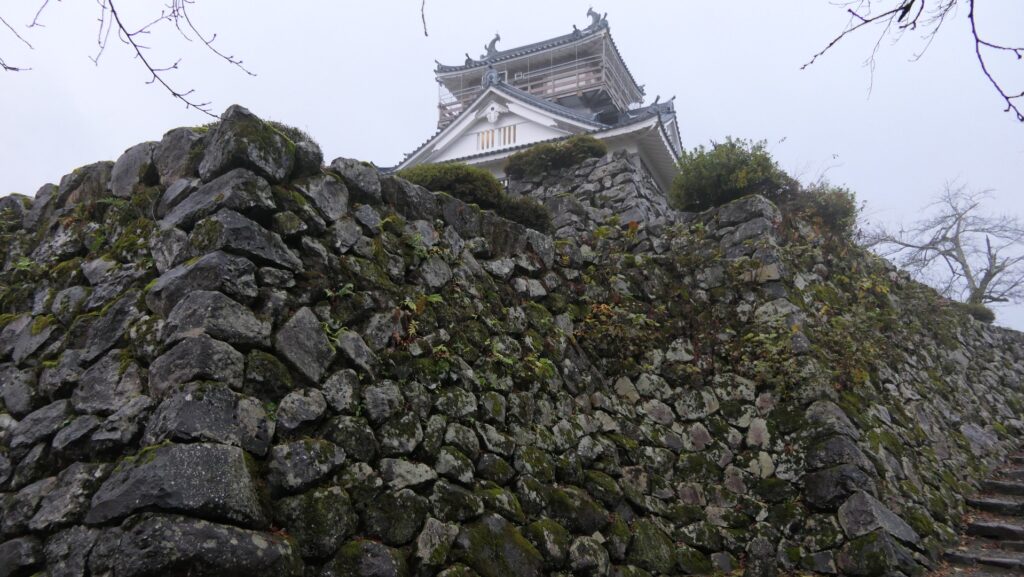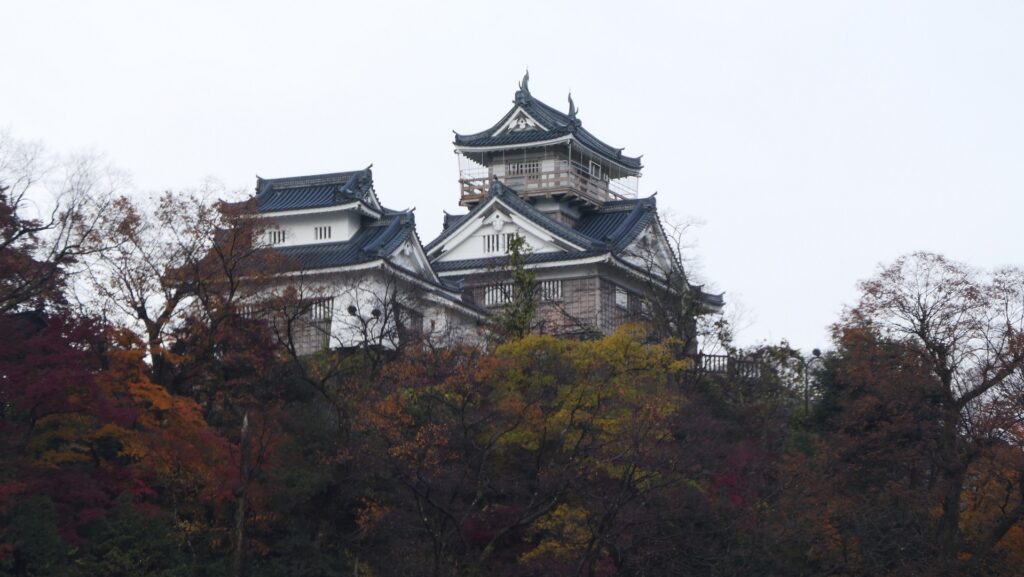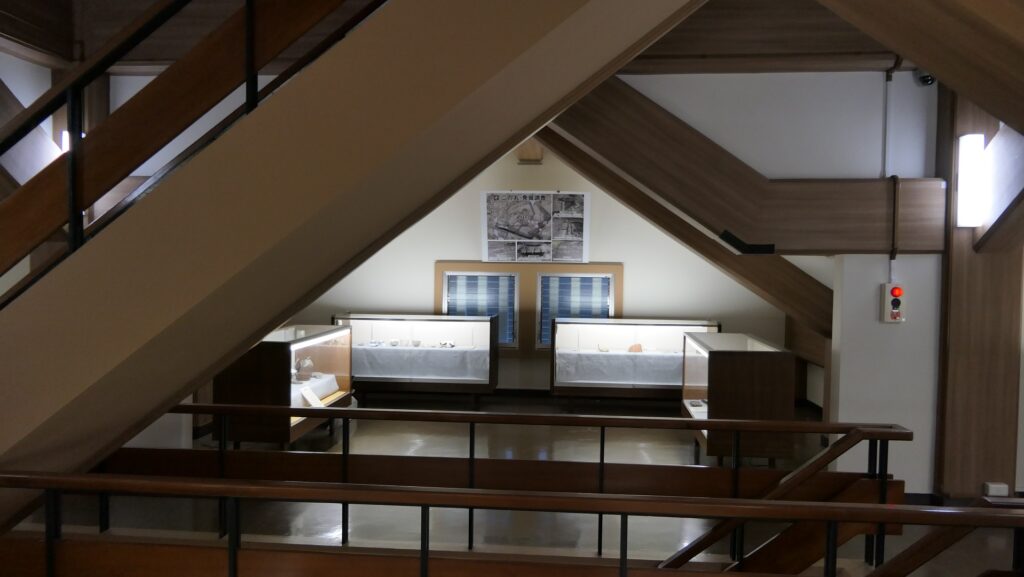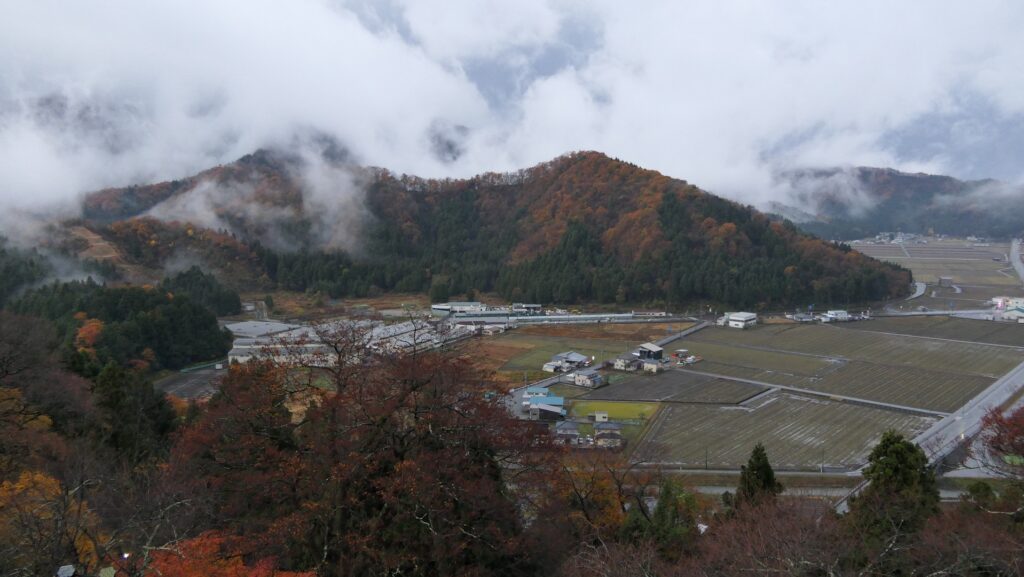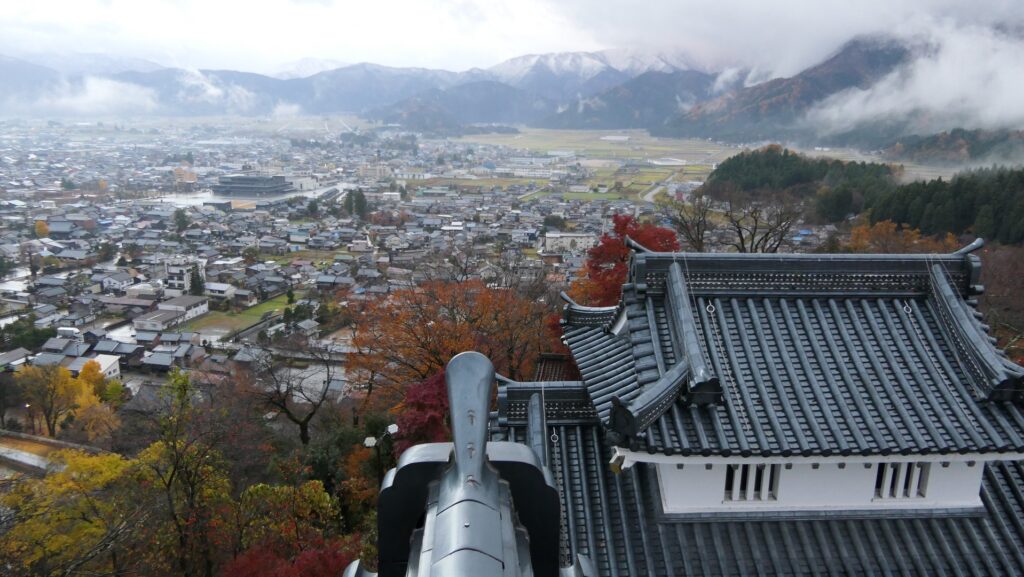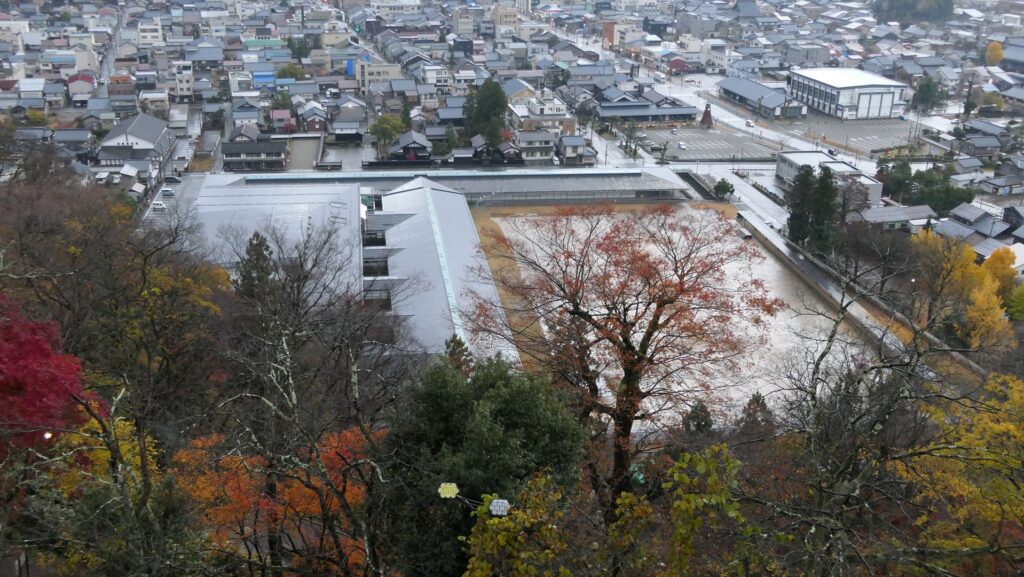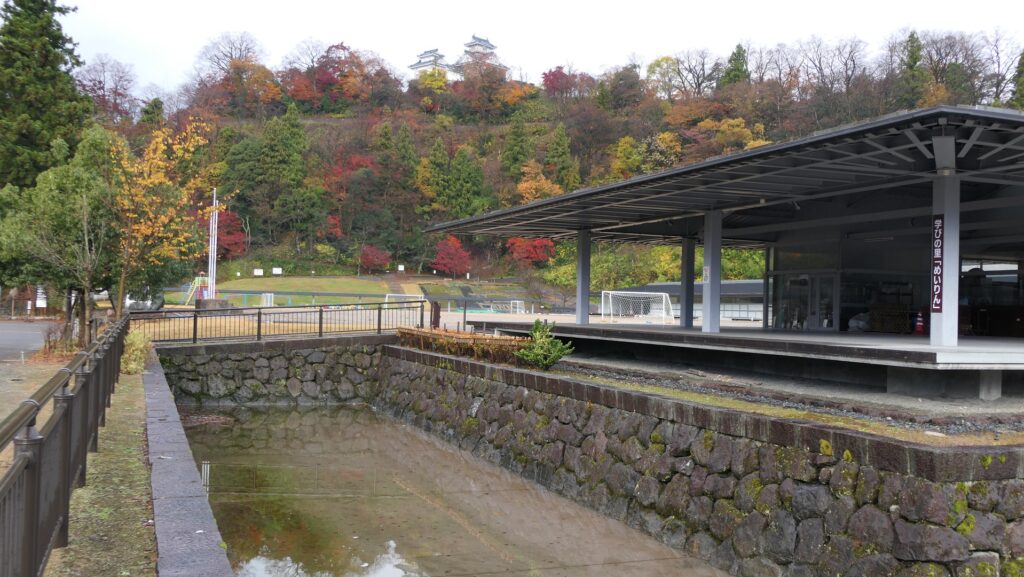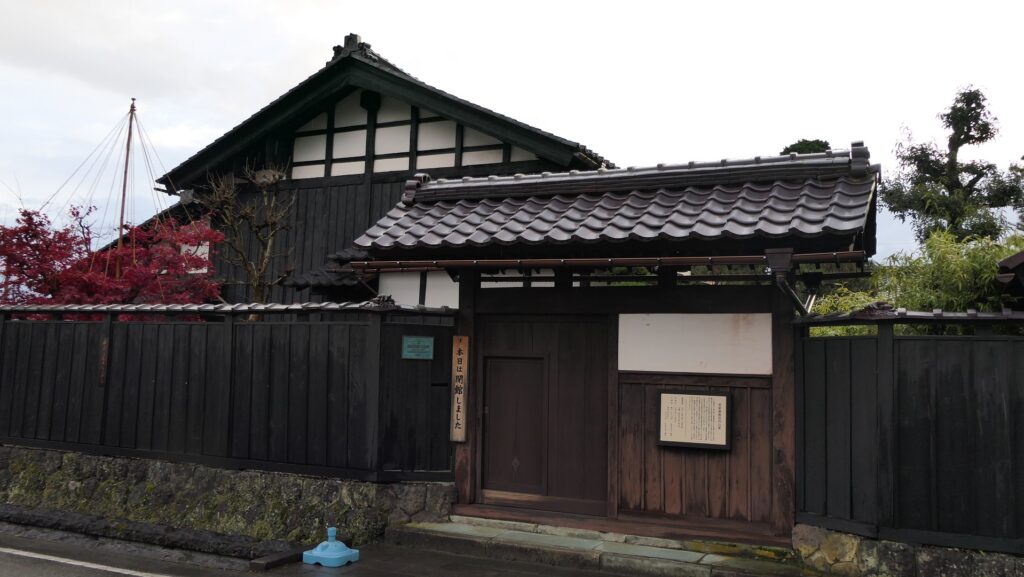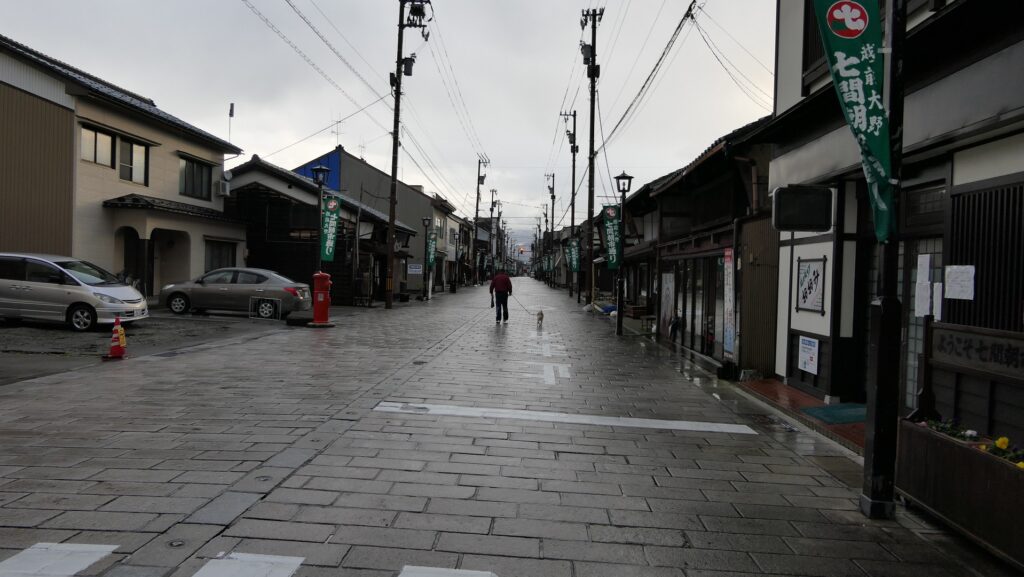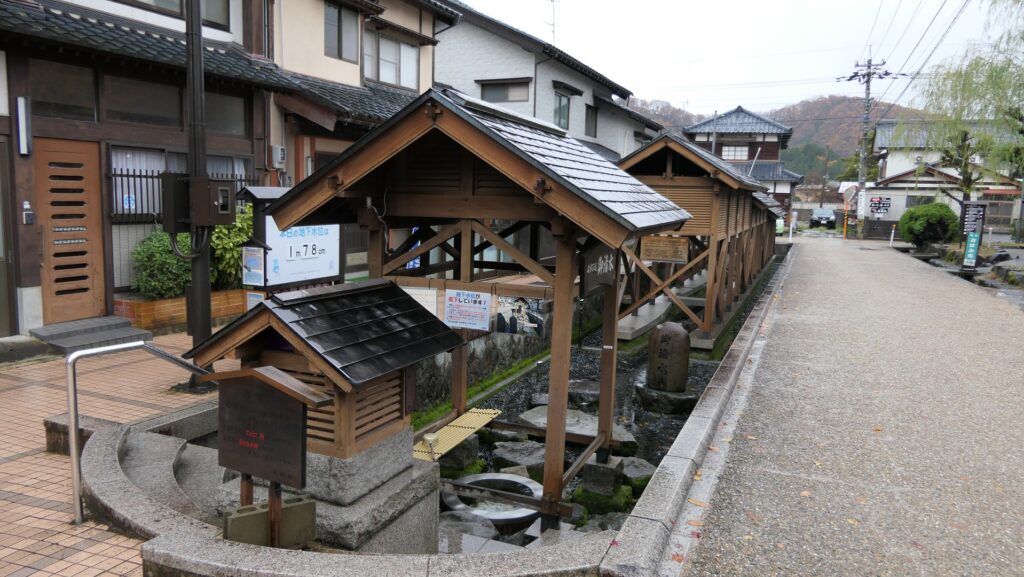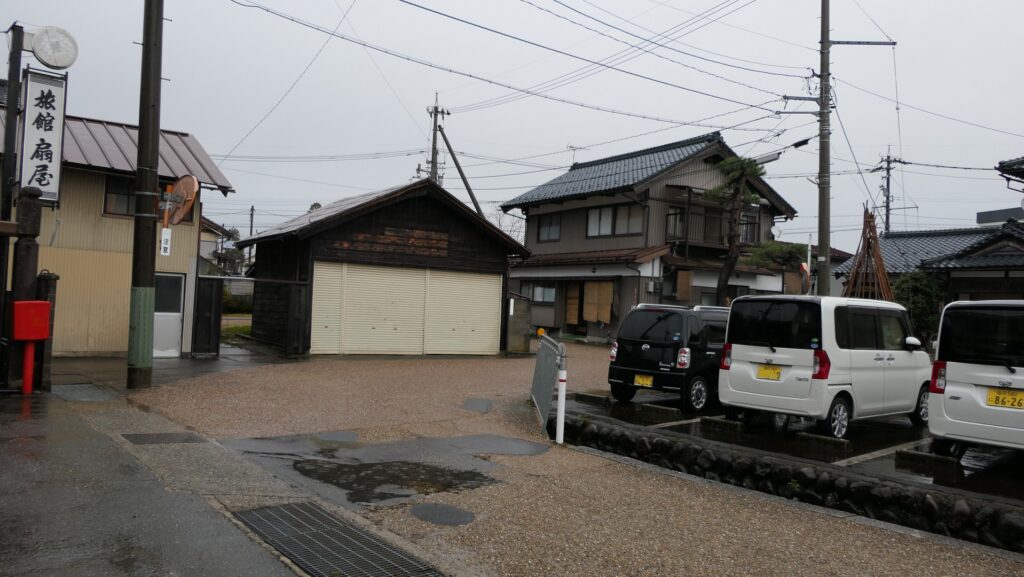Features
Symbol of Gujo-Hachiman Town
Today, Gujo-Hachiman Castle has become a symbol of the Gujo-Hachiman town. You can see the rebuilt Main Tower of the castle on the mountain from any parts of the town. The mountain is covered with cherry blossoms in spring, green leaves in summer, autumn leaves in fall, and snow in winter. A famous writer, Ryotaro Shiba said the castle was “the most beautiful mountain castle in Japan” when he visited it in the early spring when the snow remained on the ground. If you drive to the castle, you can park either at the foot, halfway up, or on the top of the mountain. You can also hike up the mountain from wherever you park.

If you climb from the parking lot at the foot, you will pass by the ruins of the rice warehouse where the farmers gathered during the Gujo uprising and the Shiroyama Park where the Main Hall was built. From this point, you can enter the mountain trail.
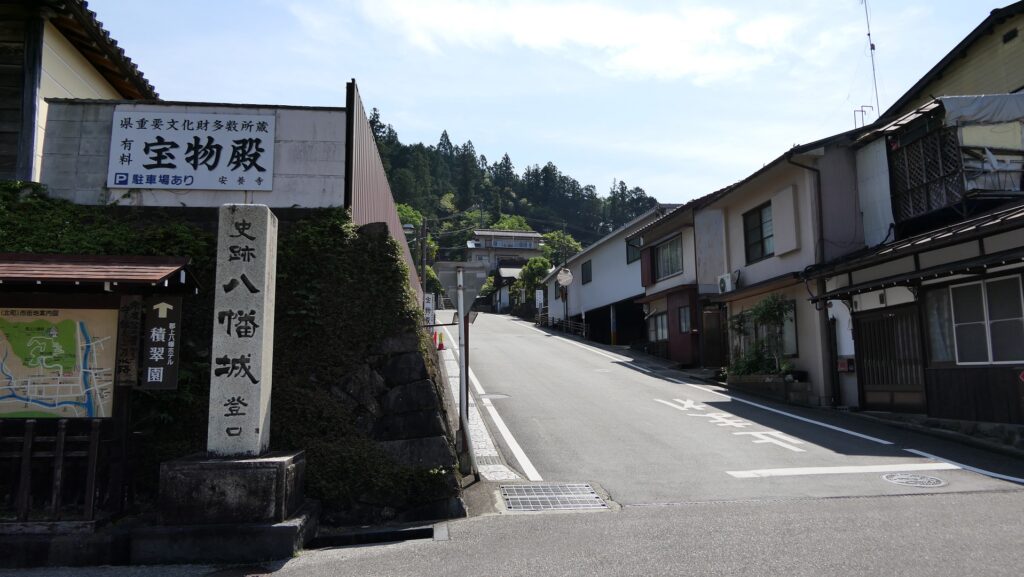
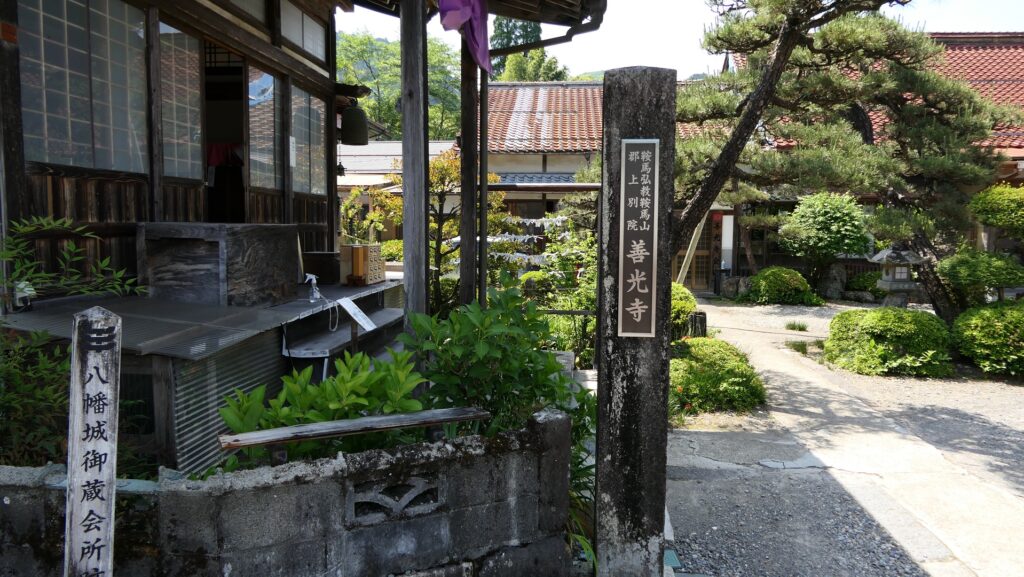
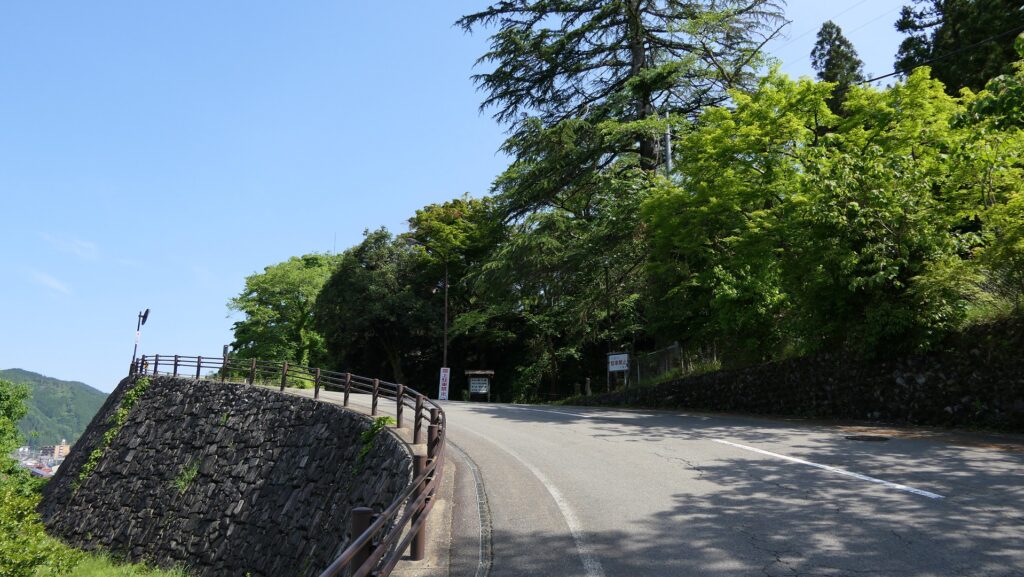
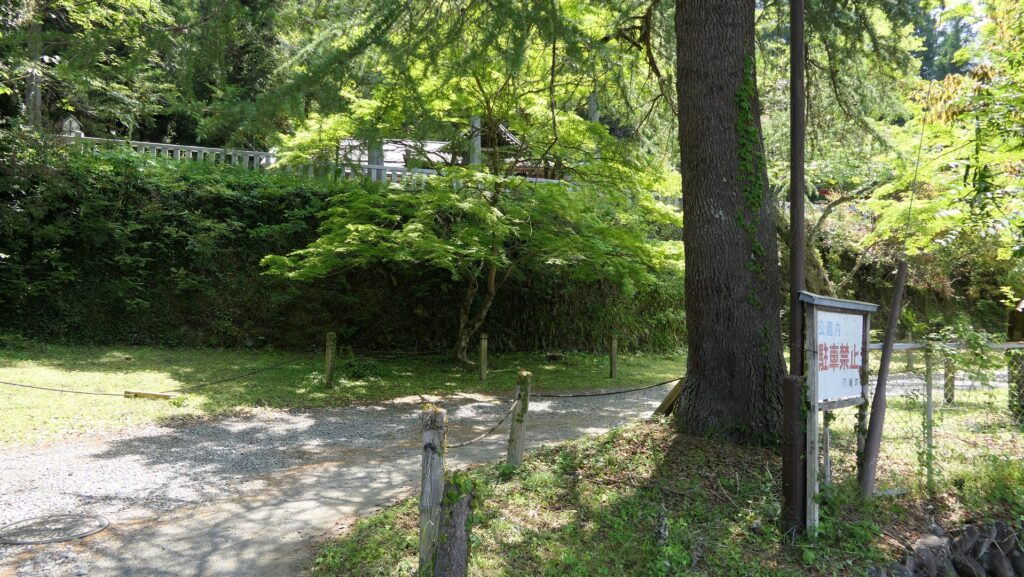
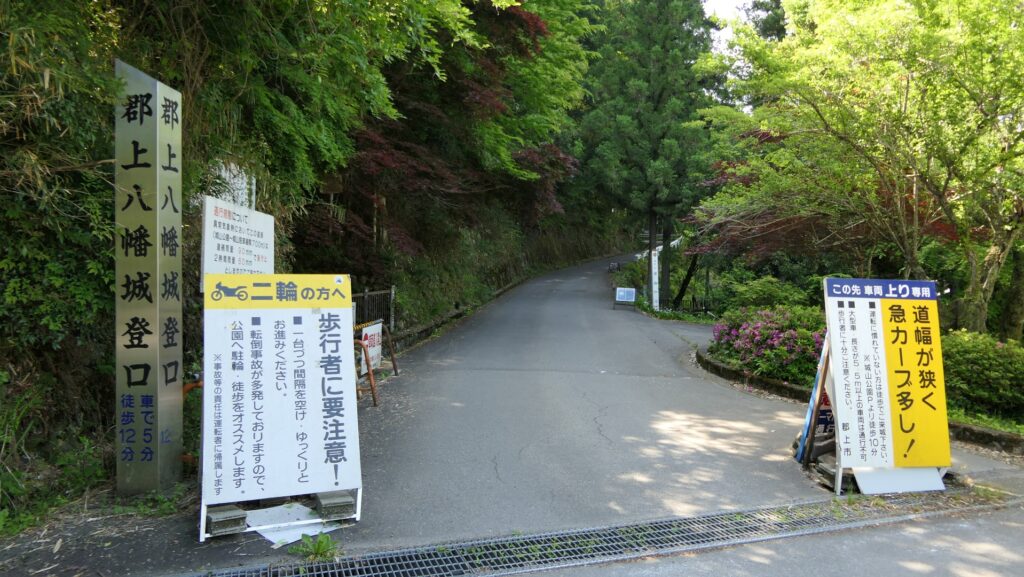
Three-tier Belt Enclosures
After about a 10-minute climb, you will see the three-tier Belt Enclosures surrounded by old stone walls that were piled up naturaly. The first (lower) tier is now used as the paved road to the parking lot on the top. The second (middle) tier is used as the promenade for visitors from the parking lot to the castle facilities. The third and final upper tier is for the path connecting the Cherry Enclosure and the Pine Enclosure on the top.
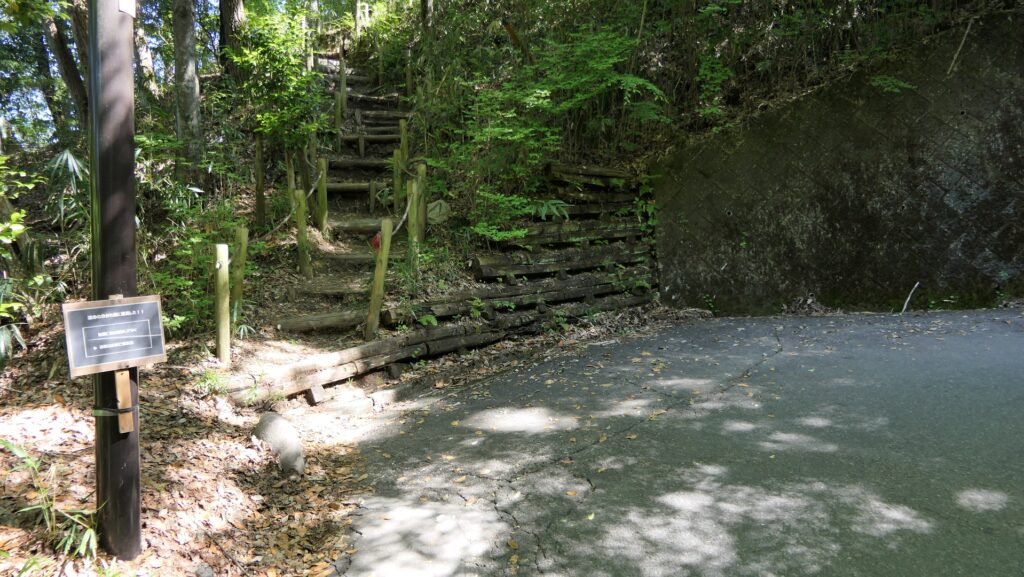
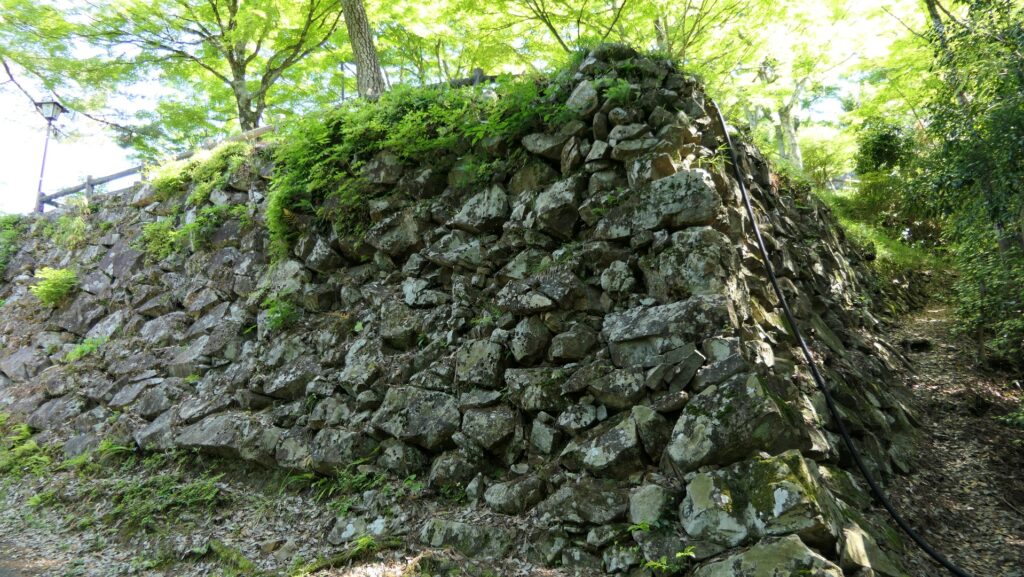
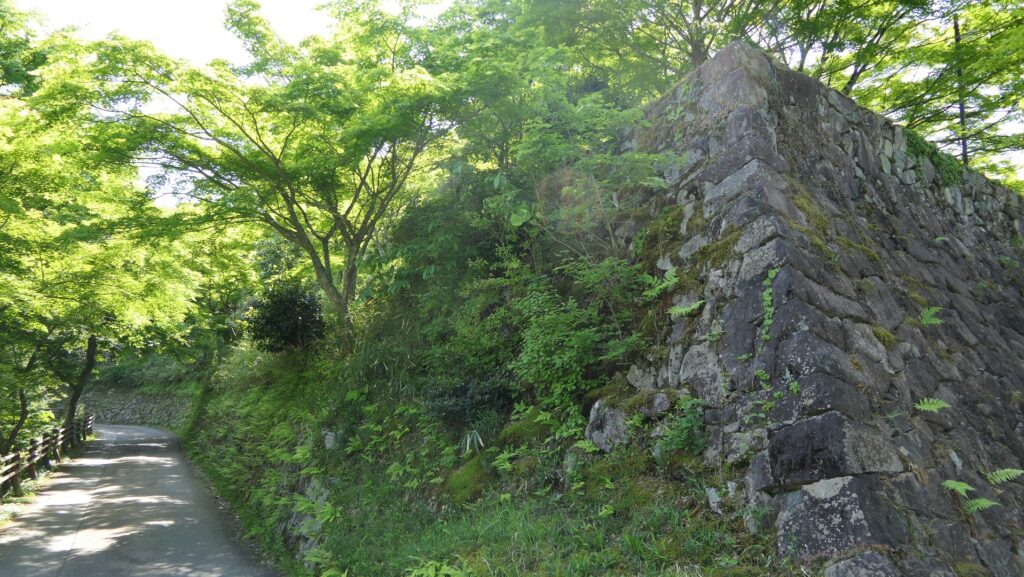
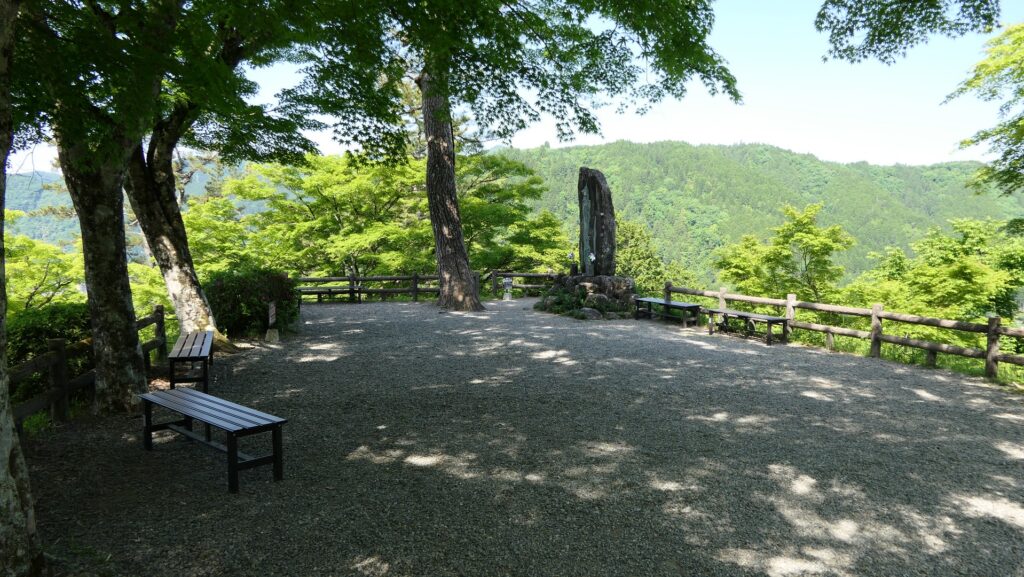
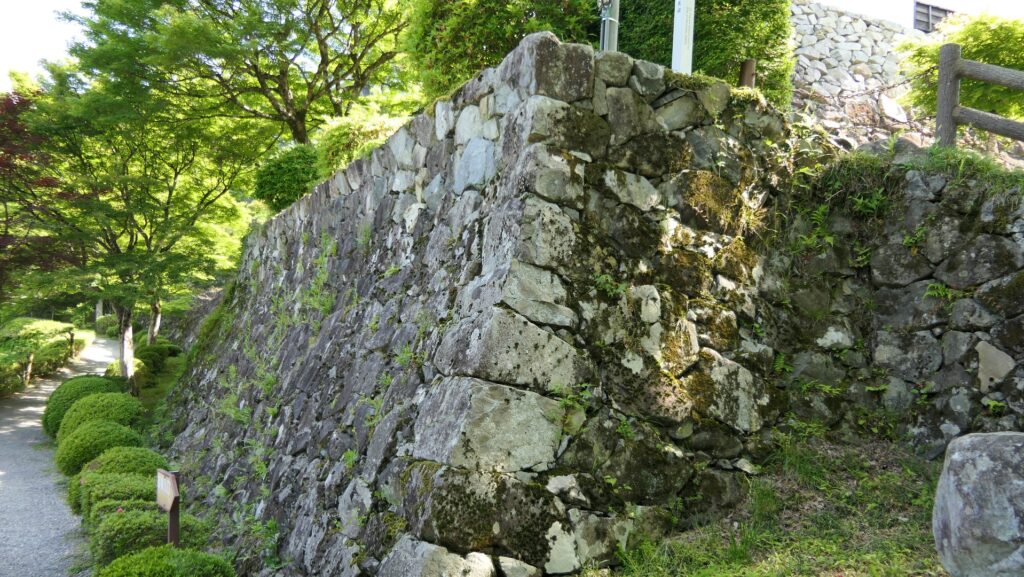
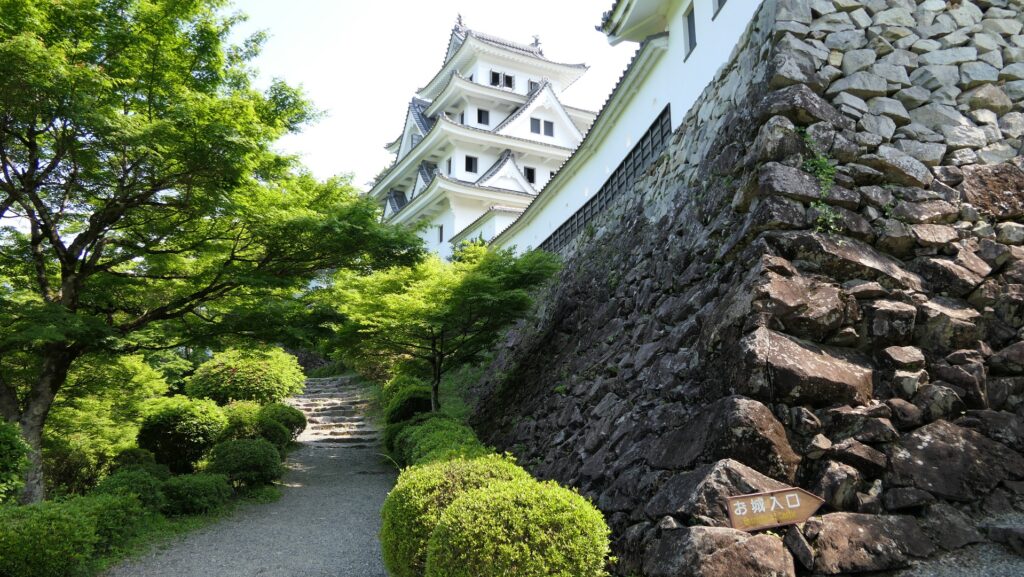
Rebuilt Main Tower has Traditional Taste
You can enter the Cherry Enclosure to visit the rebuilt Main Tower. Experts speculate the three-level Main Tower would have been built in this area. However, because it was only seen in some drawings, and not scientifically proven by excavations and records. It would be difficult to call the current tower the reconstructed one. If the original towers was not built on the past, we can call the current tower the imitation tower. Since we can’t be certain of that fact, let’s simply refer to it as the rebuilt main tower.
The map around the top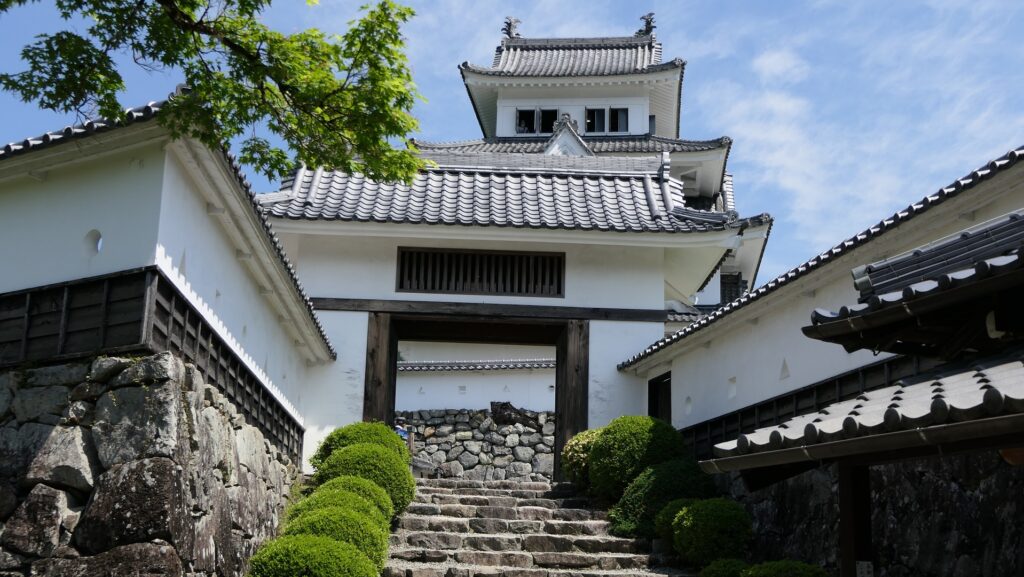
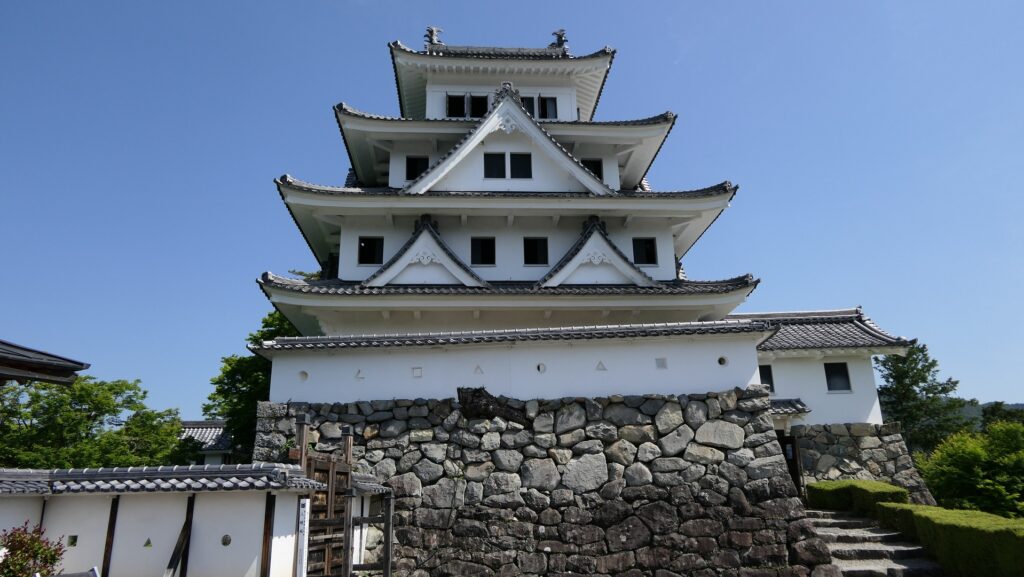
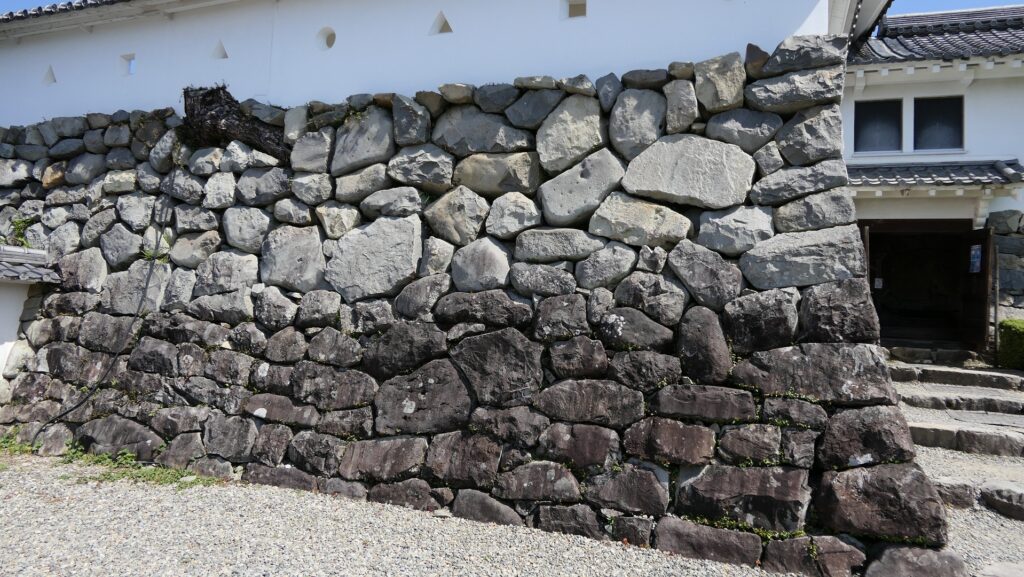
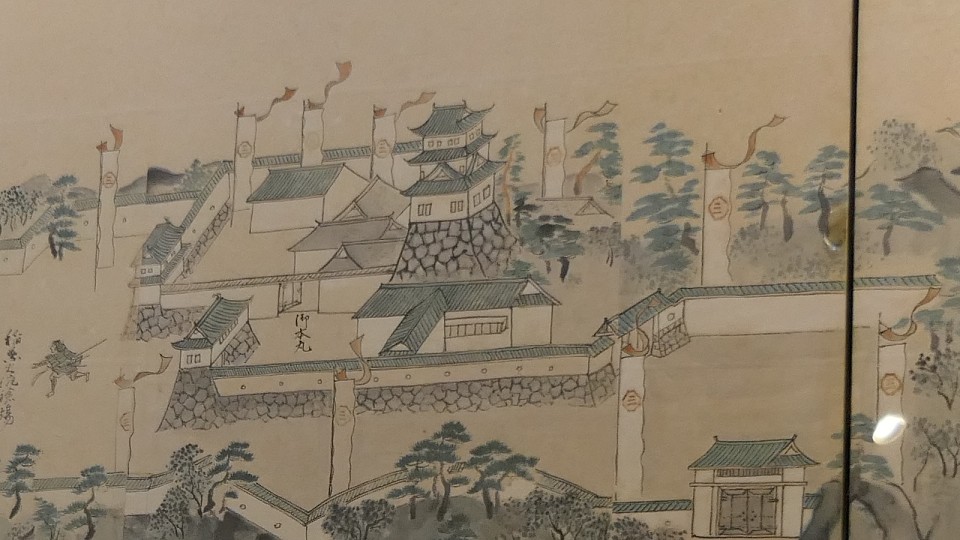
It is the oldest wooden rebuilt Main Tower in Japan, built back in 1933, nearly 90 years ago. However, it is not the original, but it has a taste of traditional Japanese architecher. You can hear squeak noises from wooden floors as you walk or climb in the tower because of this old wooden building. The tower has 4 levels and 5 floors including the lower floors which are used for exhibitions of the castle and town. You can easily climb up on the stairways to the top floor. There, you can enjoy a great view of the area around.
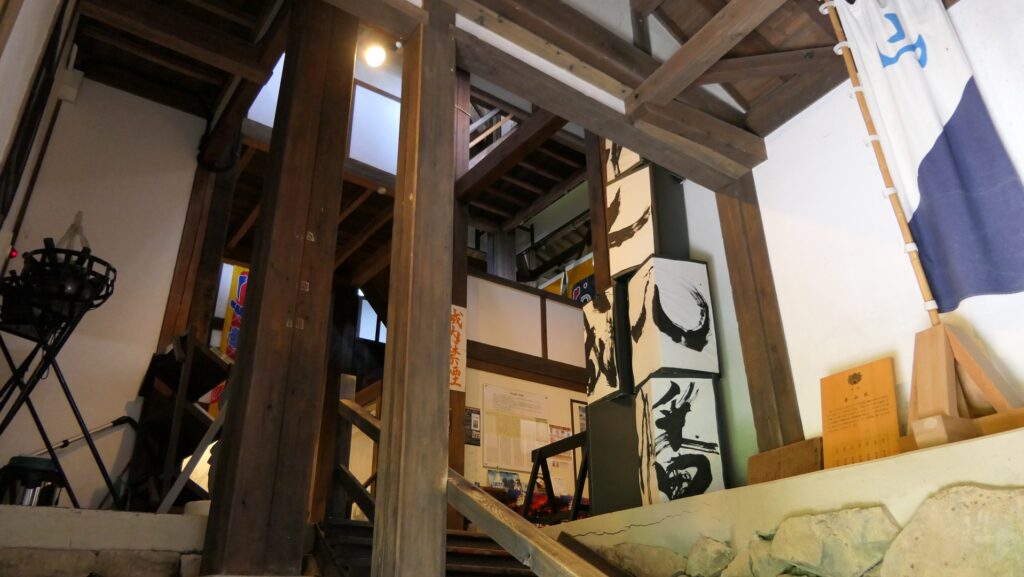
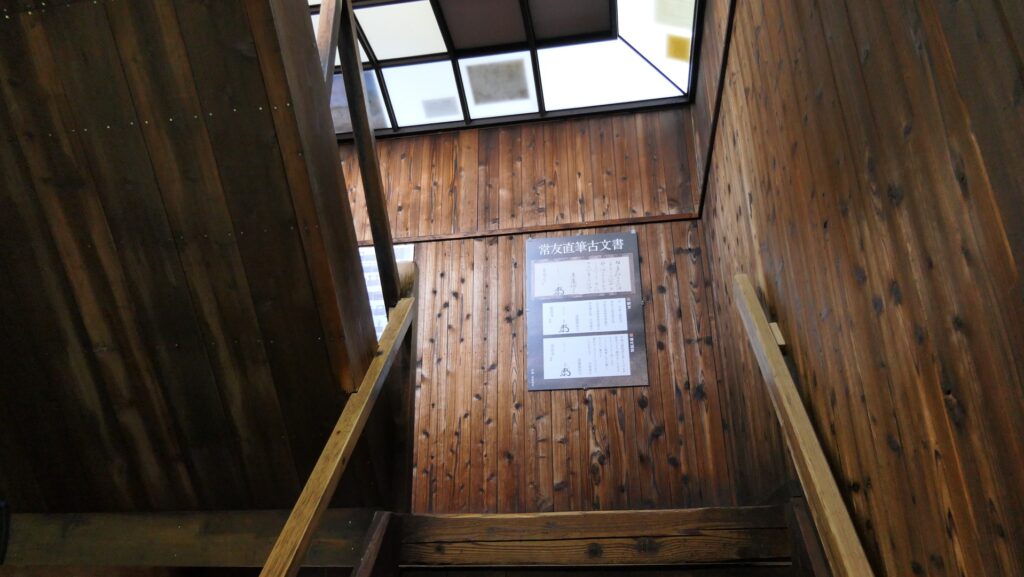
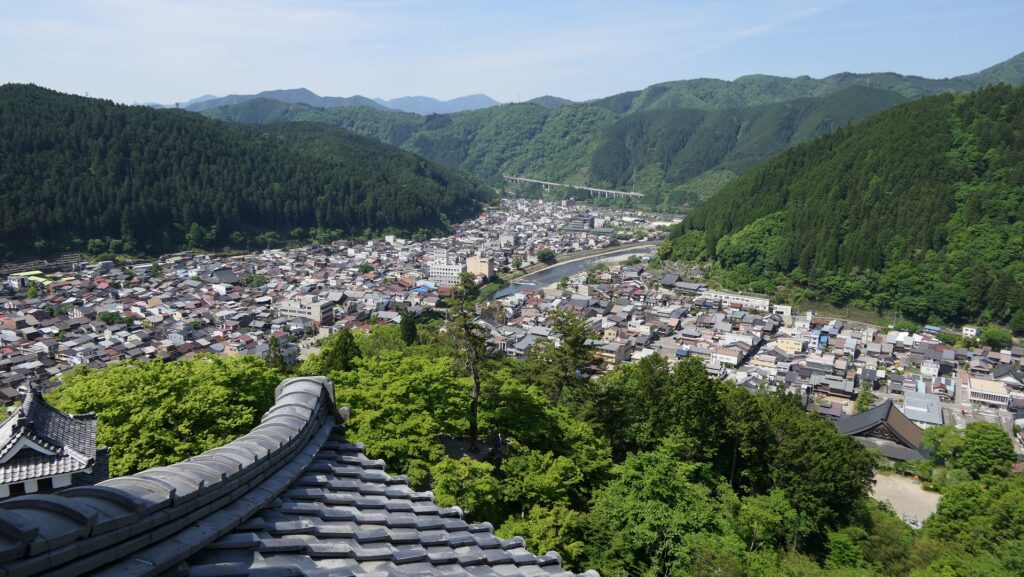
To be continued in “Gujo-Hachiman Castle Part3”
Back to “Gujo-Hachiman Castle Part1”

